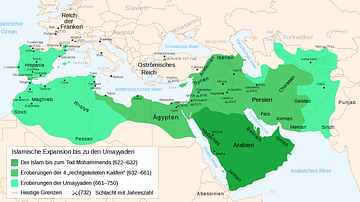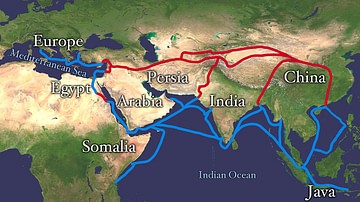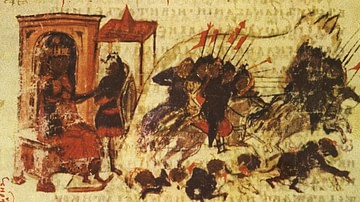Illustration
A map illustrating the Tang Dynasty of China at its greatest extent under the rule of Emperor Gaozong, encompassing modern-day China, parts of Central Asia, and the Korean Peninsula. Around 669, the Empire reached its pinnacle of economic prosperity and military might and saw remarkable advancements in art, literature, science, and technology, with the flourishing of poetry, painting, and the invention of printing.
The Tang government's efficient bureaucracy and promotion of Confucian ideals contributed to its stability and prosperity. Additionally, the dynasty fostered vibrant international trade along the Silk Road, connecting East Asia with the Middle East and Europe. In the years that followed, the Tang Dynasty faced internal strife, corruption, and peasant uprisings, leading to its gradual decline. External threats and military defeats worsened the situation, resulting in the Empire's fragmentation and the rise of regional warlords.
About the Author
External Links
Cite This Work
APA Style
Netchev, S. (2024, April 27). Tang Dynasty of China, c. 669 CE. World History Encyclopedia. Retrieved from https://www.worldhistory.org/image/18873/tang-dynasty-of-china-c-669-ce/
Chicago Style
Netchev, Simeon. "Tang Dynasty of China, c. 669 CE." World History Encyclopedia. Last modified April 27, 2024. https://www.worldhistory.org/image/18873/tang-dynasty-of-china-c-669-ce/.
MLA Style
Netchev, Simeon. "Tang Dynasty of China, c. 669 CE." World History Encyclopedia. World History Encyclopedia, 27 Apr 2024. Web. 13 Apr 2025.








